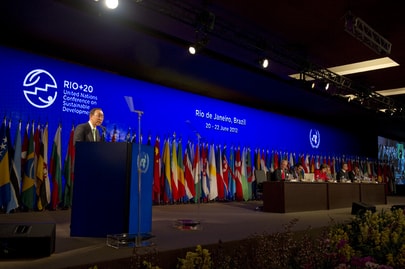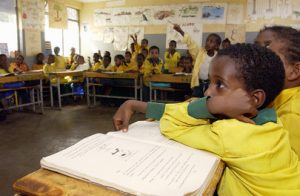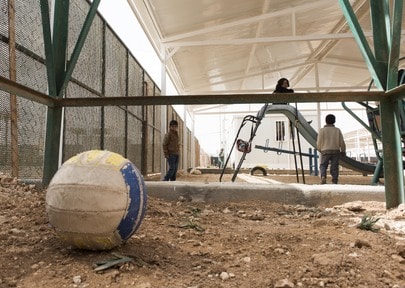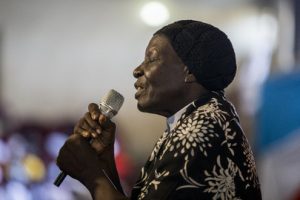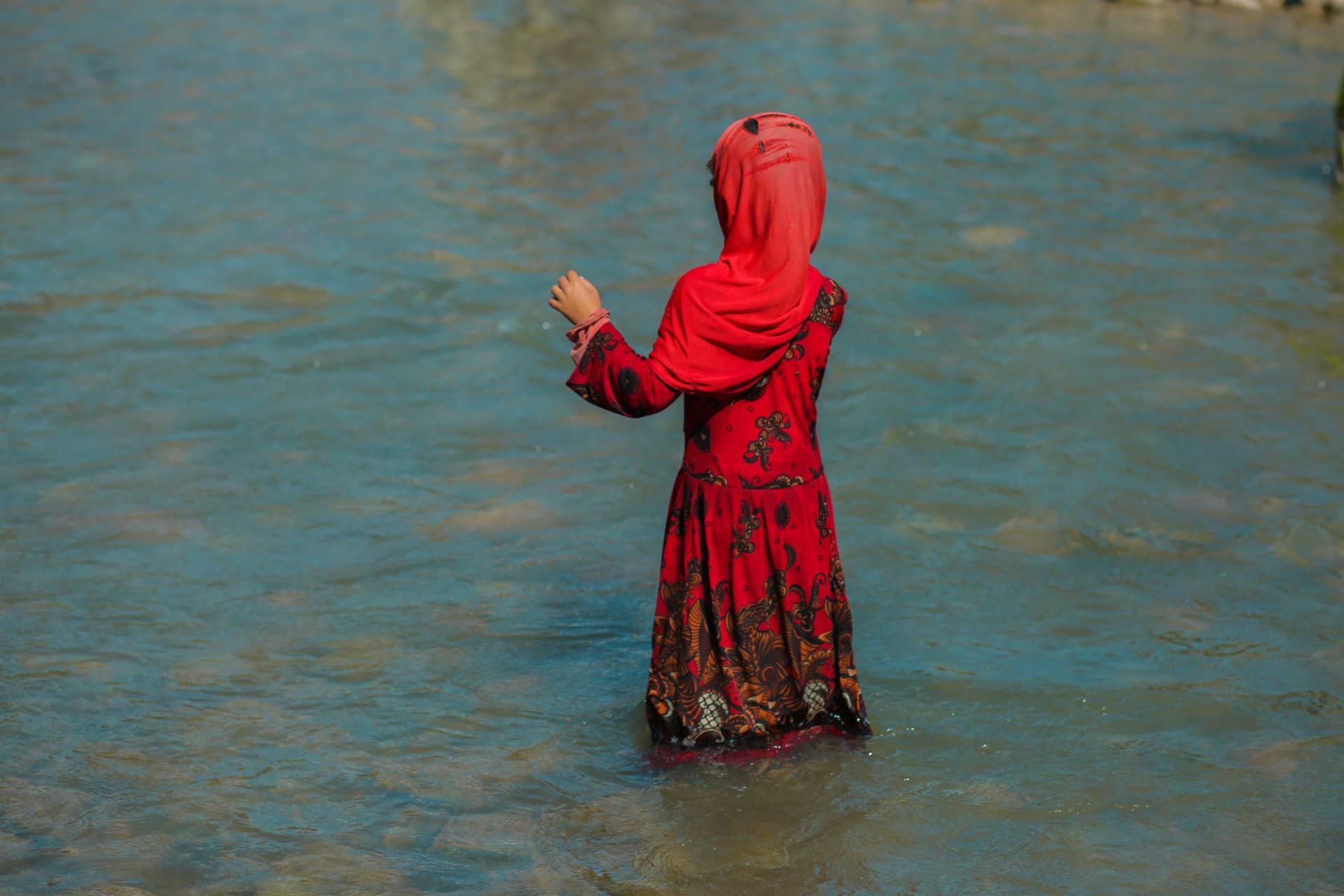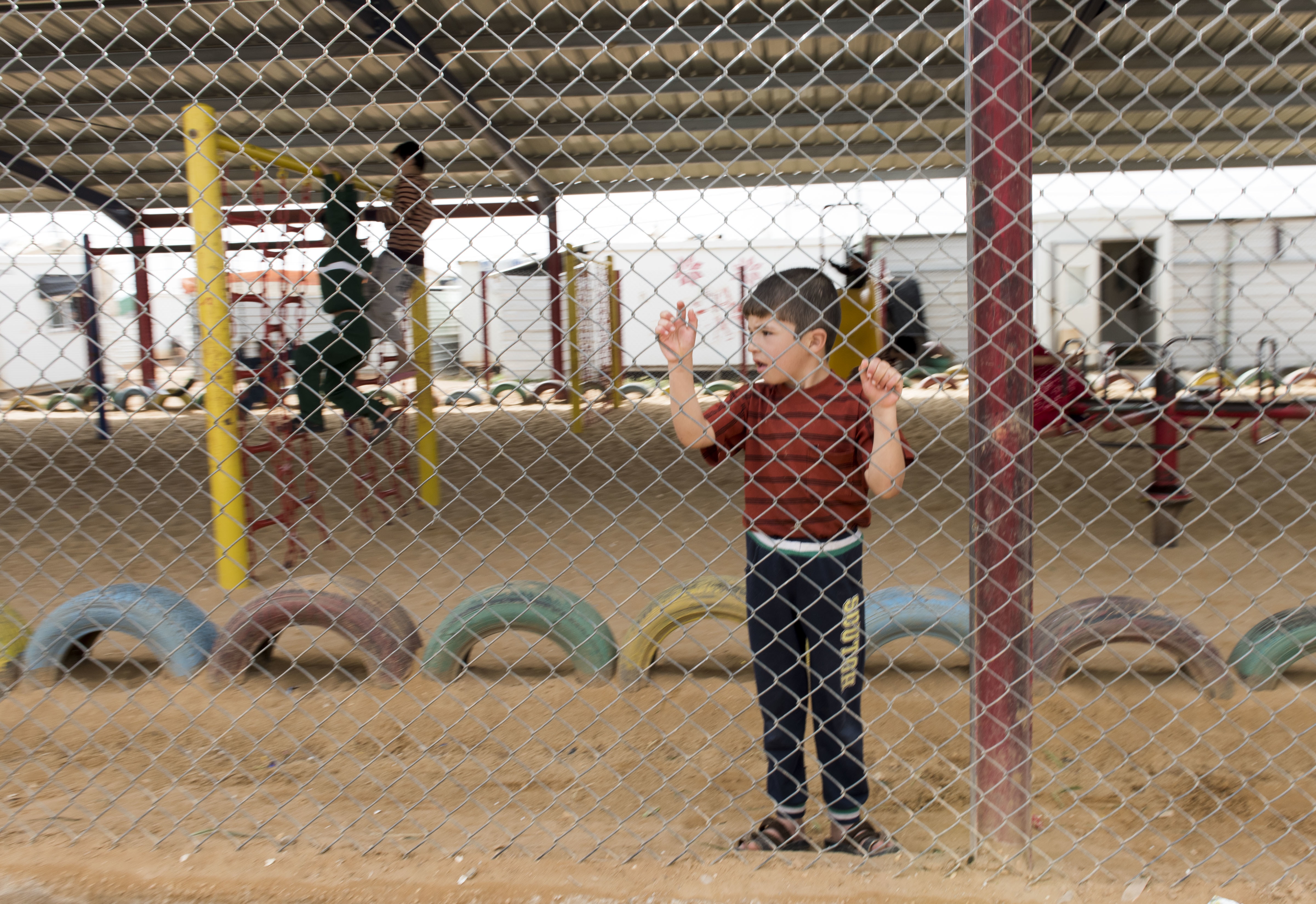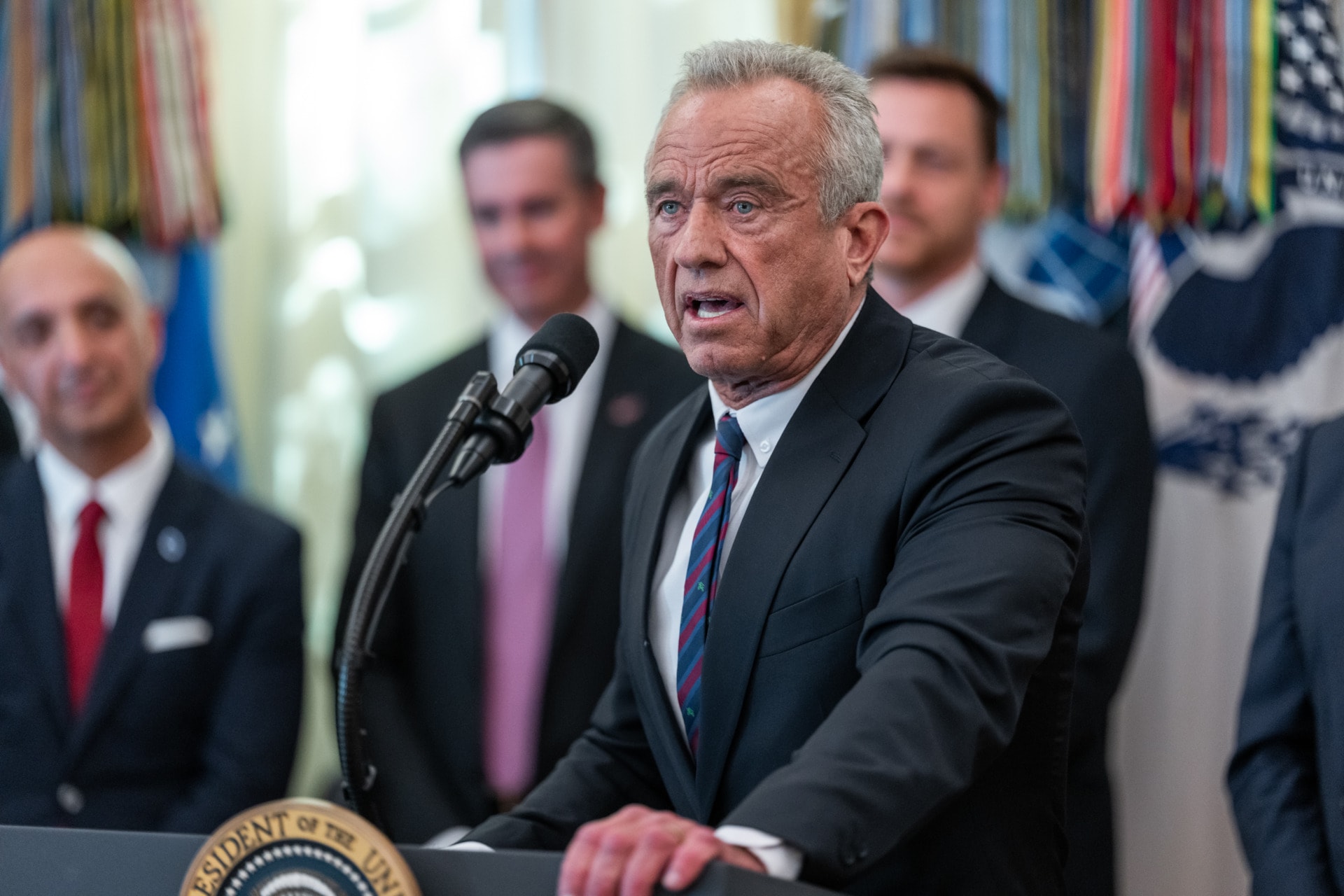EDITOR’S NOTE: THIS PIECE IS PART OF A SERIES EXPLORING THE SUSTAINABLE DEVELOPMENT GOALS. SEE THE INTRODUCTION TO THE SERIES HERE. THIS PIECE IS AUTHORED BY FARRUKH KHAN, PROGRAM MANAGER ON CLIMATE FINANCE AT THE UN SECRETARY -GENERAL’S OFFICE.
Final Hours
“I don’t think I have the space to negotiate any further,” I wearily confided to Paula Callabero of Colombia.
It was a warm evening in June of 2012 in Rio de Janeiro, Brazil, nearly twenty-four hours before the UN Conference on Sustainable Development (Rio+20) was set to conclude. The pressure was mounting to find agreement across all informal working groups. Everyone was on edge. Negotiations had persisted for nearly two years, but consensus on the Means of Implementation, the Green Economy, and the Sustainable Development Goals (SDGs) was still eluding us.
If Paula, whose vision, energy and most critically, her persistence was at the heart of what we now know as the 17 SDGs, had gotten away with one murder, I would have been the prime candidate. “I won’t accept this,” she retorted back in a stern tone, “A mandate to develop the SDGs is the only tangible outcome of Rio. You cannot give up.”
As I walked into yet another session with the G77 and China – an umbrella platform at the UN for the developing countries – to debrief the Group on the state of play, I felt lost. I had no strategy and I felt pressure from all directions. Instead of sitting down, I walked over to Abdel Ghani (Algeria and G77 President), and told him that it was time to stop negotiations on all fronts until we get flexibility from our partners. “If that’s your best judgment,” he said. We quickly spoke with other coordinators – one of which was Mohammad Khalil from Egypt. We spawned a deadlock in the negotiations for nearly six hours with the G77 refusing to engage.
Ultimately, it was the competing perspectives and positions that laid the foundation for the SDGs. In differences lies progress. We move forward inch by inch. There is no shortcut to stitching differences together, except patience. This is at the crux of multilateral diplomacy and processes.
IN THE PHOTO: SDG2 is to end hunger and improve nutrition by promoting sustainable agriculture and food security PHOTO CREDIT:UN /Martine Perret
That strategy did not work. There was no flexibility given by anyone. But in reality, it was not meant to achieve that. It was meant to push the negotiations into even smaller bilateral settings with the President of the Conference (Brazil) to gradually take even more control of the outcome.
Later during the evening, Paula and I had a bilateral meeting with Hugo Schally, the European Union’s lead negotiator on the SDGs. We agreed that we cannot find a compromise in our respective positions on whether the SDGs should be drafted through the UN General Assembly, or by the Secretary-General’s High-Level Panel led by the Prime Minister of UK, Somalia and the President of Indonesia. We agreed that given the divisions, we should let the President of the Conference present a text on the SDGs. The next day, we went through two sessions of informal negotiations where we locked our respective positions even deeper.
On the evening of the last day, I, together with my partner in crime: Paula, drafted 6 paragraphs entitled “Sustainable Development Goals” and handed them over to Luis Figueiredo Machado— one of the sharpest Brazilian diplomats and the lead negotiator for Brazil.
“Is this going to be objected?” Luis probed. I told him that, to the best of my knowledge, it would not be provided it is placed within the larger text.
From a substantive perspective, the inter-governmental history of the Sustainable Development Goals may not be very exciting. It is very difficult to find excitement in talking about an inter-governmental negotiating process aimed at launching yet another inter-governmental negotiating process. But it should provide a context to analyze the post-Rio process.
To reach this point, where we were on the cusp of taking a historic decision, in merely 6 paragraphs, had taken us a year of talking about it. We went through several phases where text on the SDGs ballooned into several pages. The concept of SDGs moved from explicit denial to acceptance. It was a fascinating journey. A steep learning curve for me personally. Like all UN-led negotiations, each one of the personalities, countries and/or set of them had his, her, or their own unique version of what the SDGs meant. And they differed widely. Some were way ahead of the time – like the European Union presenting six new goals – and some still don’t get it.
Ultimately, it was the competing perspectives and positions that laid the foundation for the SDGs. In differences lies progress. We move forward inch by inch. There is no shortcut to stitching differences together, except patience. This is at the crux of multilateral diplomacy and processes.
The Genesis and the Debate
Much has been written on the genesis of the Sustainable Development Goals, and those cliff-hanging discussions by and amongst the world’s authoritative development practitioners, heads of international organizations, international bureaucrats, diplomats, national actors, civil society activists and think tanks.
Countless individuals contributed to this process, prior to and at the Rio+20 Conference, and later during the actual drafting of the 17 Goals last year. It has truly been a universal effort and a universal agenda.
IN THE PHOTO: A classroom in Ethiopia, 2003. SDG 4 seeks to ensure an inclusive high-quality education for all PHOTO CREDIT: Eskinder Debebe
As I sit down to pen the inter-governmental negotiating history, a number of thoughts are racing and competing to come out: long and often endless conversations, understanding country positions, edgy diplomats awaiting instructions from their capitals, long and often repetitive statements from the delegations, three preparatory meetings, three inter-sessional meetings, and innumerable informal meetings and repeated deadlock in the negotiations. Many personalities who played central roles. Late Ambassador John Ashe of Antigua and Barbuda, USG Shah Zu Kang, Ambassador Kim (who initially didn’t like me at all), Ambassador Maged Abdelaziz of Egypt, Jimena (Guatemala), and Ye Min Wu (Singapore). And above all, regular Karaoke Nights where my dearest friend Mohammad Khalil (Egypt) would virtually push us to come and exhaust one another by singing and dancing after having exhausted one another on the floor with arguments and counter arguments.
But my reflection in this chapter is not about any of the above.
This story is about how the “Future We Want” Outcome was entirely different than the proposed initial framework, that focused on the green economy and was proposed by international bureaucrats, and interestingly enough, people like me.
This story is about how Rio+20 managed to not only repair the fractured multilateral development architecture that resulted from the belly-flopped Climate Summit at Copenhagen in December 2009, but also how it emphatically signaled the need to redesign the global and national development landscape. Four years on, the global development architecture has been truly reconfigured and not least to what was agreed to at Rio.
This story is about how national priorities overtook and virtually guided an international negotiation and its outcome. The Outcome has been the most significant determinant in redefining what the UN system, development banks, financial markets and nearly all involved in the development field, should or should not do for the at least the next 15 years. It is about the United Nations setting the global agenda for development.
In sum, this story is about an international process going right.
I was fortunate to see this unfold from two very critical vantage points: first, as the developing world’s spokesperson on this issue; and second, as the Sherpa from Pakistan on the 12-member Rio+20 Bureau that steered the Conference.
“We need to get the story out. How it started and ended in Rio,” Paula has been pushing me since 2012. “You know it inside out.” It is true: the post-2015 development agenda would have been mere rhetoric if there were no SDGs.
Apart from lethargy and the fact that I had moved on to new roles, I did not feel terribly comfortable with the thought.
First, I was not as visionary as many others, whose accounts you will read after this. When I first heard of the SDGs, unlike many others, I was not an immediate convert. My very first instinct was to ask questions, as any diplomat or expert in my position would do. To put it bluntly, I did not get it.
Related article:“UNITED NATIONS: GEARING UP FOR AGENDA 2030“
The SDGs seemed like yet another half-baked, crazy idea for us to pour hours and hours into before discarding it. I was worried that after nearly a decade of work, countries have finally figured out the MDGs, and now, we were about to change the rules of the game on them again. True, we were getting close to expiry date but nowhere close to achieving the goals. Logically, we should have extended and boosted efforts around them.
Second, I was the reluctant coordinator of the developing world. If Abdel Ghani, a fellow diplomat from Algeria and the coordinator of the developing world’s umbrella group (popularly known as the Group of 77 and China) had not repeatedly rejected my plea to ask someone else to be the spokesman, I would not be writing this story today. I am grateful now that he paid no sympathy to my frustrating ordeal of dealing with more than 100 countries. He also stood solidly behind me – defending – when some in the developing countries didn’t like my way of negotiating.
But my reluctance was for the right reasons. Even as late as September 2011, the purpose and deliverables of the conference remained unclear.
Also, those who have some idea about the internal workings of the G77 and China – which always negotiates on behalf of the developing countries on development matters in the United Nations – know how difficult it is to coordinate a group this diverse, which includes emerging economies, middle income countries, lower middle income and poor developing countries, that are part of Least Developed Countries, Least Developed Countries, landlocked developing countries, and the Small Island Developing States, sub-divided into those in the Caribbean and those in the Pacific. In addition, regional groups such as Asia, Africa and Latin America also have their say. There is China on the one hand and a tiny country like Tuvalu on the other.
The coordinator is supposed to navigate through all of these interests. In this case, Brazil – the host country – had its own unique position. To bring such a diverse set of countries together— from those facing existential threats to those controlling financial and oil markets, and others with even larger global interests – requires considerable patience which I thought I lacked.
The Bureau
While much has been written about individual personalities, development practitioners and entities in the UN system steering the global discourse from the Millennium Development Goals (MDGs) to the Sustainable Development Goals (SDGs), very little attention has been paid to the crucial role that the Rio+20 Bureau and the members of the Bureau played in successfully managing the Conference as well as the launch of the SDG process.
The Bureau was comprised of some of the most seasoned diplomats of our times. The Under-Secretary-General of the Department of Social and Economic Affairs, Sha ZuKang – also Secretary General of the Conference (SGC); late Ambassador John Ashe of Antigua and Barbuda; Ambassador Kim Sook, Permanent Representative of Korea; Ambassador Maged Abdelaziz, Permanent Representative of Egypt; and Mr. Paolo Soprano, EU Representative in the Bureau; and Counselor Asad Majeed Khan from Pakistan, whom I later replaced. Above all, I would like to outline the role of two of my very dear friends, Tariq Banuri and Nikhil Seth, who both served as Directors of Sustainable Development at different junctures. Nikhil was effectively the brain behind the Bureau. We owe him a great deal for where the UN development agenda is today as a whole.
By continuing to push for the involvement of national actors and national input, the Bureau instilled the crucial shift in the outcome: from a Conference delivering an international manifesto on green economy and establishing an institutional framework (such as Sustainable Development Council) to an agenda with a direct national role and impact. This came from the Rio+20 Bureau. This shift opened up space for defining a successor arrangement to the Millennium Development Goals and gave a decisive boost to finding an agreement on the SDGs.
For nearly a year, we struggled to wake up the national actors, who did not even bother to respond. But when they did, they brought with them a pivotal shift in the way we collectively looked at sustainable development and what was it supposed to deliver.
Connecting the Dots
“You can’t connect the dots looking forward; you can only connect them looking backwards,” these wise words by the late Steve Jobs hold true as we examine the 17 SDGs.
When we began this journey back in May 2010 with the first preparatory meeting, Rio+20 was about everything except the new Goals. The concept of the Sustainable Development Goals did not exist. In the end, it was only about the Goals. All else paled in significance to that outcome.
The growing focus on the need for the SDGs resulted from a collision. On the one hand, we faced global challenges that the Conference was supposed to address and skewed expectations set forth in the so-called green economy, and on the other hand, the reality facing the countries.
The foremost challenge was the need to restore faith in the multilateral system and rebuild trust amongst the negotiating parties. Between the failure of the climate talks in Copenhagen; the less than ideal implementation of the MDGs; discontent with the WTO Trade Round; income and development gaps between the high and low-income countries; and persistent calls by the developing world to the United Nations on ODA and technology transfer, there was a clear lack of trust and faith in the system.
To address these challenges, the grand bargain struck at the UN negotiations was “green economy” and the “institutional framework for sustainable development.” As is with all compromises, differences emerged quickly. These differences were visible during the first preparatory meeting in May 2010, which took place on the heels of the failed Copenhagen meeting.
As negotiations commenced, the expected Rio outcome included a green economy action-oriented roadmap with a possible set of principles, identification of key sectors and redefinition of GDP to include the natural capital accounting. On the institutional front, it included the possible elevation of the Commission on Sustainable Development to a Sustainable Development Council and the conversion of UNEP – a UN Programme – into a specialized UN Agency.
As we proceeded to integrate national input into the thinking and processes, it became clear that developing countries were finding it hard to accept the concept of green economy. They wanted to focus on issues of concern to them and not what the development intellectuals thought. There was also growing unease amongst the vast majority of developing countries who felt that there was an attempt to redefine sustainable development through the green economy. Many felt that retaining the fundamental character of sustainable development – with emphasis on three pillars – would require giving equal importance to setting objectives under each as opposed to just the environmental dimension embedded in the green economy or later through the Secretary General’s Global Sustainability Panel (1), whose mandate was to formulate a new blueprint for sustainable development and low-carbon prosperity. As differences emerged, many called for establishing a strict dividing line between the negotiations and the panel.
As a result, the Bureau created a strict demarcation between the Rio+20 process and the Secretary-General’s Panel. We requested that the Panel disengaged from the intergovernmental negotiations and that its work program avoided duplication with other consultative processes.
In reality, the developing world wanted decisive action on poverty eradication. Developing countries felt that the richer countries were using the Rio+20 process to achieve the Climate Agreement through the back door. They felt that this would undermine the core Rio principles, such as the principle of common but differentiated responsibilities. They were afraid that international support to a green economy transition could lead to conditionality issues, parameters and standards which might generate unjustified or unilateral restrictions in the areas of trade, financing, ODA or other forms of international assistance.
For the developed world, it was about moving away from the fossil fuel led economic growth, the question of fossil fuel subsidies, and how to leverage investment from the private sector. The idea of a global green new deal was one of the fundamental aspects and outcomes for Rio. They called for an agreement on internalizing externalities into prices to reflect true environmental and social costs; establishing sustainable public procurement policies; ecological tax reforms; public investment in sustainable infrastructure, public transport, renewable energy, or retrofitting of existing infrastructure and buildings for improved energy-efficiency—as well as natural capital, to restore, maintain, and where possible, to enhance the stock of natural capital.
Photo Credit: UN/Mark Garten
The Transformation
By November 2011, the Secretariat informed the Bureau that a total of 627 contributions were received towards the preparation of compilation document. The compilation document was roughly 6,000 pages. The dividing lines between the developed and the developing world were fully drawn out, but there were a few critical developments that started shaping the elements of the Rio outcome.
As negotiations proceeded from here onwards, especially after the Durban meeting, several trends became visible.
The concept of the Sustainable Development Goals came to the center of the table. The Regional Preparatory Meeting for Latin America and the Caribbean (7-9 September 2011) called for establishing the SDGs.
The debate changed. Now, it was not about whether we would or would not pursue the development of the SDGs, but rather, we began to explore the link between the post-2015 development agenda and the possibility of the SDGs. This included discussion on how to treat the MDGs.
For a full mindmap containing additional related articles and photos, visit #SDGStories
The focus on the green economy began to dissipate. The 2010 Cancun Conference on Climate Change had stitched an agreement on the way forward on climate change, which was moving smoothly towards the Durban Conference in South Africa in December 2011. This relieved pressure from green economy. The Durban Conference moved the issue towards low-carbon and resilient economic growth.
We also started to explore successor arrangements to the Commission on Sustainable Development (CSD), such as the Sustainable Development Council. Emphasis on the mobilization of financial resources or the so-called “Means of Implementation” also increased.
Fast-forward to March of 2011, and we were still nowhere close to finding even the basic elements on which we could construct the Rio+20 outcome. I distinctly recall, late Ambassador John Ashe, Co-Chair of the Rio+20 Bureau, starting the Second Preparatory Meeting by posing four questions: What will the Conference deliver? What will be the outcome? How will the UNCSD will be different from other sustainable development conferences and what are the major issues and challenges?
The Reality
With the concept of the Sustainable Development Goals becoming a reality, the negotiating challenge shifted: How will we construct/evolve the goals and should we identify a specific set of issues that these goals will focus on? The positions differed significantly on the aforementioned issues. There was additional divergence on several key areas, such as the level of detail of the SDG process and details on monitoring and reporting.
While the G77 and China were unanimous in its view that drafting process of the goals should be through an inclusive and open-ended process under the UN General Assembly, there was a difference in the nature of guidance that Rio+20 should give to that process of drafting. A sizable number of G77 delegates, including the proponents (Columbia and Peru), called for going beyond this position and identifying a set thematic area on which the SDGs could evolve.
The position within the developed countries’ camp was equally complex. While they were unanimous that the Conference should give a mandate to the UN Secretary-General to evolve a set of SDGs for presentation to the UN General Assembly, there were divisions on whether or not to identify any thematic areas.
The European Union went as far as to provide a specific proposal identifying six thematic areas and concrete goals to be achieved by 2020. These focused on:
- increasing access of small-holder farmers
- increasing public and private investment in sustainable agriculture
- reducing post-harvest losses
- achieving universal, sustainable and equitable access to safe and clean drinking water and basic sanitation
- improving water efficiency
- improving the implementation of integrated water resource management.
Between March and May 2012, I held several conversations with my counterparts in a bid to bridge differences on the process. It was very clear from those conversations that my counterparts and their respective groups or countries were not in favor of the General Assembly trying to define what those goals and the process of monitoring would be. In all of these conversations, they cited examples of how the UN system evolved the Millennium Development Goals. They were also of the view that if a process is led by General Assembly, it would amount to giving a veto to second committee delegates and diplomats who are often not connected to ground realities. They were also afraid that bringing in experts from the capitals would entail significant costs. In some ways, I had sympathy for their view since I had seen how the involvement of the experts clearly shifted the outlook and issues that the Conference was supposed to deliver. However, I was not convinced that a purely technical process driven by a set of experts appointed by the Secretary-General would do the job well either. Above all, I knew that the Group I was representing would not, under any circumstances, agree to a process driven by the Secretary General.
At that moment, I started to find an ally within the developed world and found that the European Union had some sympathy for the G77 position regarding an inter-governmental process. They were not, however, convinced that the UN General Assembly – an entity comprised of more than 190 states— was the right place to discover what the SDGs should be all about.
IN THE PHOTO: International Women’s Day Celebration in Juba, South Sudan. SDG 5 seeks to achieve gender equality and empower all women and girls. PHOTO CREDIT: UN/ J C Mcllwaine
I had previously faced a similar situation when I was leading negotiations on behalf of the developing world on the establishment of the Green Climate Fund at the UN Cancun Conference in December 2010. We decided to create a small group of 45 experts nominated by the countries and regional interest groups. Given the success of this strategy, I proposed to the G77 and China that we pursue a similar method in this process. The Group authorized the exploration of the idea with our negotiating partners. I persisted. The European Union found it interesting and workable but required that we provide additional guidance to the process in advance by identifying a set of thematic areas to focus on. The European Union also argued that the new goals should comprise of the existing 8, and should not go beyond 12 total.
Vindication
A week before the opening of the Rio Conference, Prime Minister David Cameron announced that the Secretary-General would be establishing another High-Level Panel on the post-2015 development agenda. The Panel would be co-chaired by President Susilo Bambang Yudhoyono of Indonesia, President Ellen Johnson Sirleaf of Liberia and Prime Minister David Cameron of the United Kingdom, and it would include leaders from civil society, the private sector, and government.
The news came like a bullet. Many within the Group alluded that I was either complicit in the process or had been completely made a fool of by the negotiating partners. During an opening meeting, one delegation questioned whether I had prior knowledge that the Secretary- General was going to put up this Panel. They suggested that I must have provided either explicit or implicit approval. In reality, I had no knowledge. I felt betrayed by my partners.
This news made my job exceedingly difficult. I was working within the Group to evolve a set of elements for guidance for the subsequent process – as a bridge to compromise with the European Union. Then suddenly I found out that a High-Level Panel is being led by one of the European Heads of Government. The appointment of the Indonesian and Somalian Presidents also created some fissures within the developing world.
As we reached Rio, the G77 and China’s position became even more rigid and my space for negotiations curtailed. Faced with the reality of another High-Level Panel, I found the EU – which had originally indicated some flexibility in launching an inter-governmental process – retreating into an inflexible position. Simultaneously, the developing world became even more united in ensuring that the decision on SDGs should only be restricted to a process without giving any further guidance and details on the thematic areas.
This situation was compounded by an extremely inflexible position by the partners on the Means of Implementation. The only area which seemed to be making progress was on the institutional framework for sustainable development where there was growing convergence on establishing a High-Level Political Forum to replace the existing Commission on Sustainable Development established by the 1992 Conference.
The eventual decision to launch a 30-member Open Working Group of the UN General Assembly was not ideal. Subsequent history proves that I was not spot-on. But at that moment it was the best possible compromise that would not have been objected. We needed to show that the Open Working Group would be as agile as the High-Level Panel.
Later, I did face a barrage of criticism when the General Assembly repeatedly failed to establish the Open Working Group. Some colleagues and friends reflected that, through this decision, I had virtually condemned the SDGs into oblivion. The inter-governmental process of defining the Goals was wrong from the beginning.
Again, at that moment, I managed to forge an agreement within the Asian Group to rotate the seats every month and thereby increased the membership from 30 to more than 70. This concept was then adopted by the other regional groups.
Despite the enormous difficulties the UN General Assembly went through in initiating the substantive negotiations on the SDGs, the developing world’s stance that 193 Member States are perfectly capable of defining the development agenda stands vindicated.
Recommended Reading:”WHY THE CLIMATE V DEVELOPMENT FINANCE FIGHT MUST STOP“
(1) In August 2010, the Secretary General appointed a high-level panel on Global Sustainability to formulate a new blueprint for sustainable development and low-carbon prosperity. It was mandated to reflect on and formulate a new vision for sustainable growth and prosperity, along with mechanisms for achieving it. The Panel was co-chaired by Finnish President Tarja Halonen and South African President Jacob Zuma.
_ _


